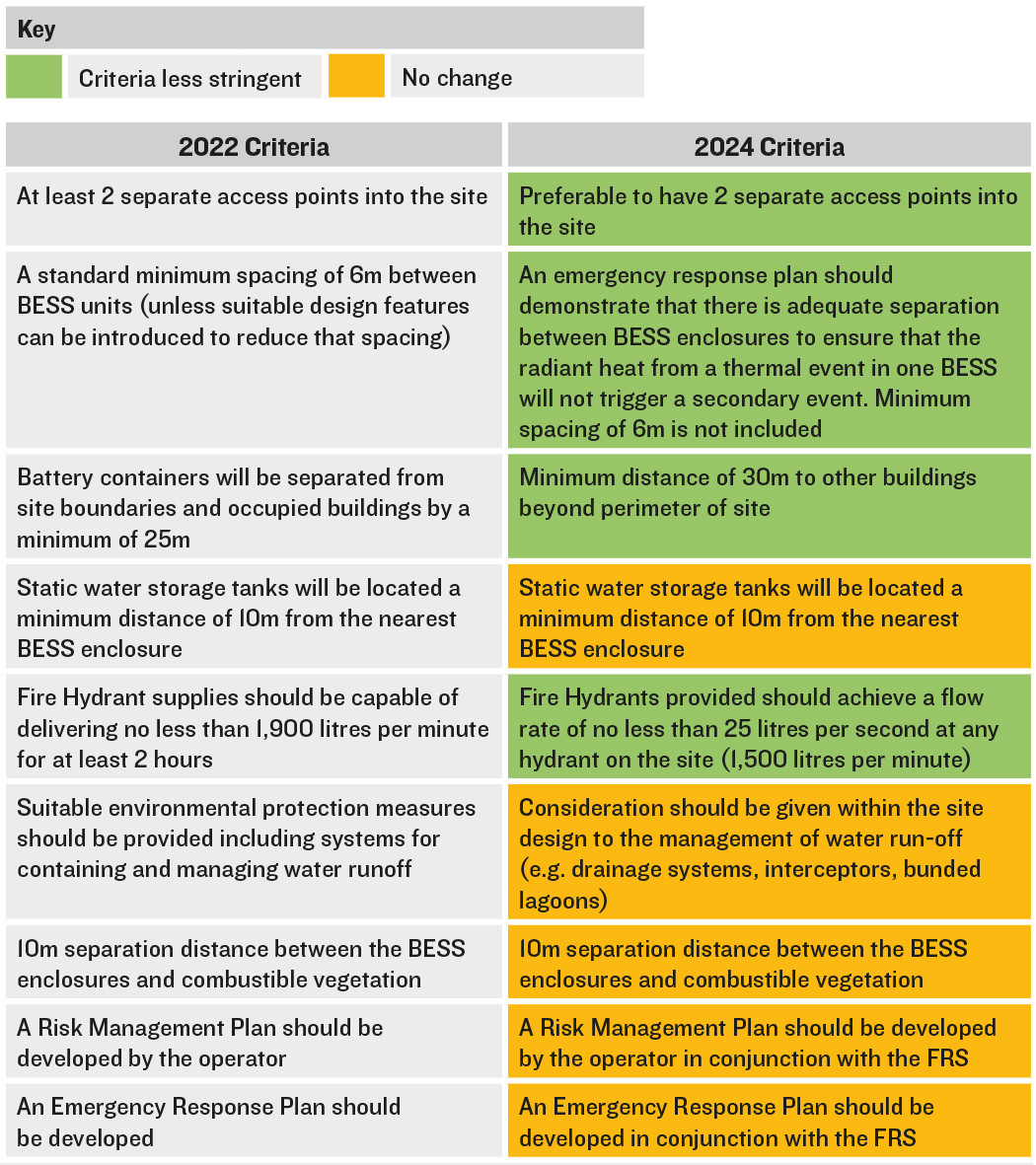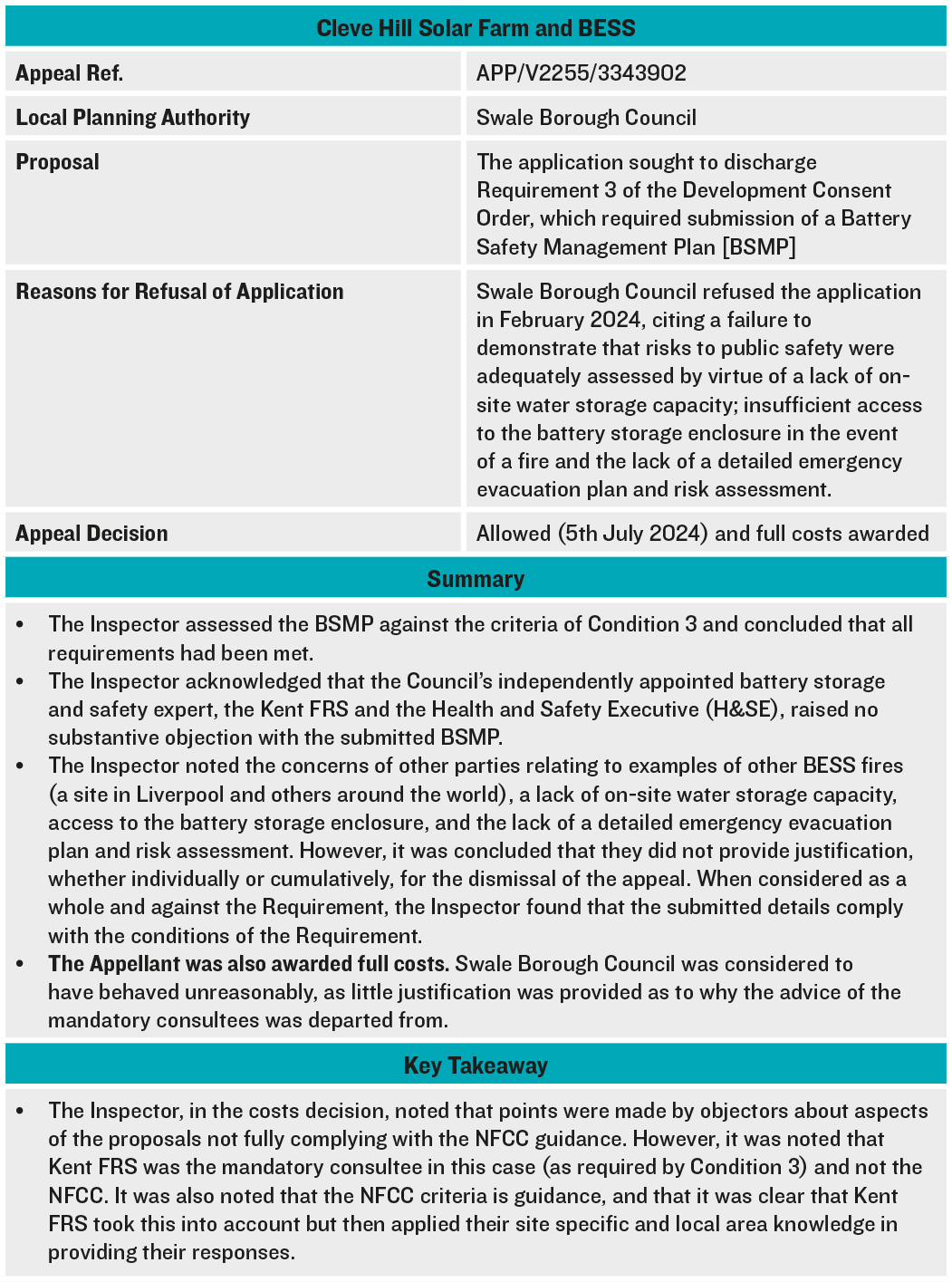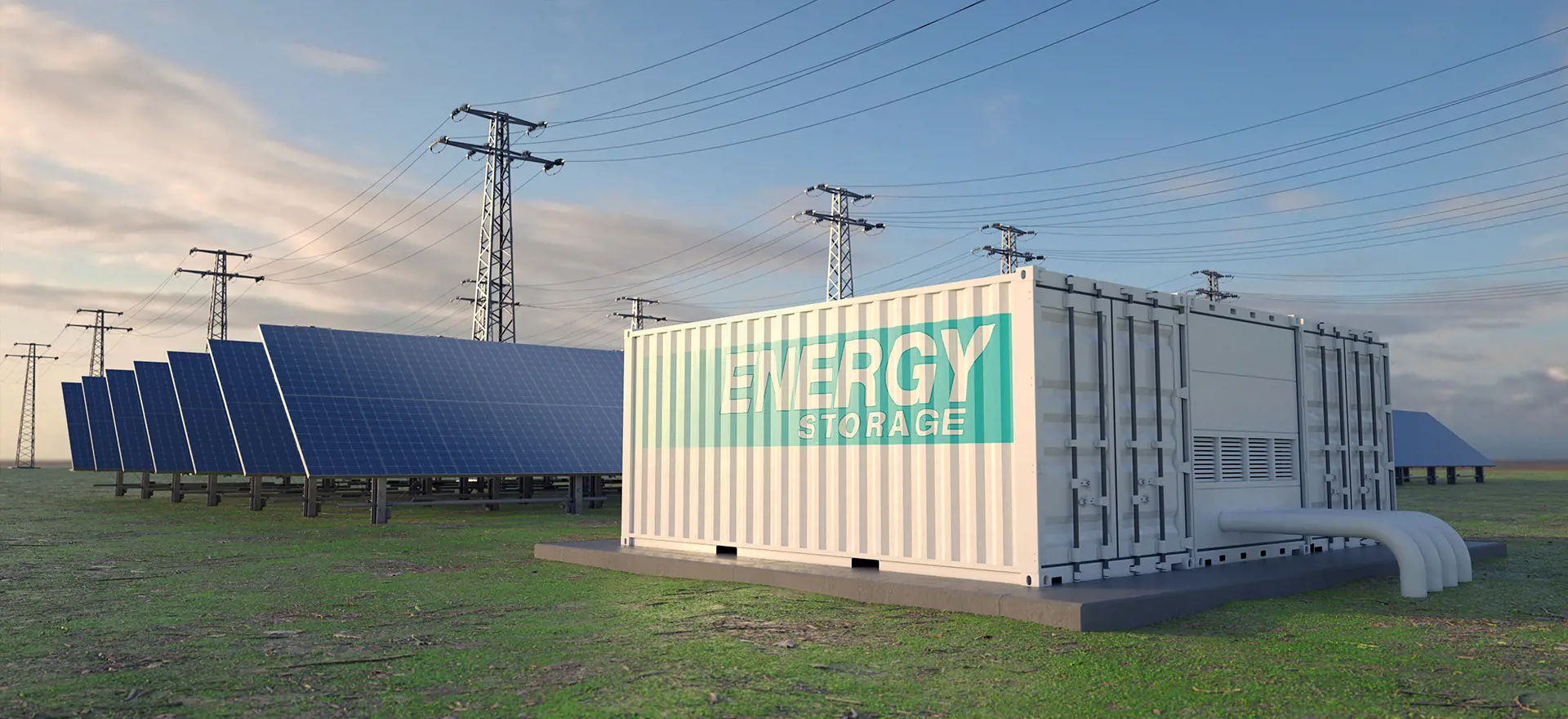Battery Energy Storage Systems [BESS] are a fundamental part of the UK’s move towards a sustainable energy system. As BESS facilities have become more widespread across the UK over the past few years, fire risk and safety has become a heated topic of debate in the planning world.
A consultation has recently been launched by the National Fire Chiefs Council [NFCC] on a new BESS fire safety and risk guidance document, which runs until 22 August 2024. Upon formal adoption, this will supersede the original guidance document (November 2022) (Version 1)
[1].
The 2022 guidance document has become a key consideration for BESS schemes throughout the planning process, influencing site design and layout, and impacting decisions at planning committee and planning appeal stage.
This blog assesses the key similarities and differences between the original NFCC guidance and the new consultation draft, and also provides a review of recent appeal decisions to understand how the Planning Inspectorate [PINS] views the guidance.
What is the NFCC Guidance?
The original NFCC guidance document (Version 1) is intended to support Local Fire and Rescue Services [FRS] to provide consistent evidence based contributions to the planning process. The guidance also sets out a number of fire risk and safety criteria which BESS schemes (typically 1 MW or larger) should seek to adhere to. The NFCC guidance is also now referenced in the Planning Practice Guidance [PPG]
[2], which has further raised awareness of the guidance within the planning system.
Based on our experience, a number of the criteria in the NFCC guidance can be difficult to achieve. We are also aware that developers often find the NFCC criteria unreasonable and excessive depending on the specifics of certain sites. The technology and safety measures behind BESS facilities has advanced significantly in recent years and safety related incidents are rare in the UK.
Local Fire and Rescue Services are not considered a statutory consultee for planning applications, although they are usually engaged throughout the process and generally take a measured and proportionate view towards the NFCC criteria. However, the guidance is also creating issues at planning committee with some local planning committees seeking to stringently apply the criteria with limited consideration of site specifics.
Lichfields is aware of a number of instances in the past few years of planning applications being significantly delayed, and in some cases refused, on the basis of what planning committees consider to be insufficient fire risk and safety information, or the proposals are considered to not meet certain NFCC criteria.
Ultimately, the NFCC guidance is just guidance and not legislation, and it is the opinion of the local FRS as a consultee which should be the key determinant for LPAs and planning committees when considering applications.
Version 1.0 (2022) vs Version 2.0 (2024)
So, what has changed from the original 2022 version to the 2024 consultation draft? The table below provides a comparison of the key criteria.

As illustrated above, 4/9 of the criteria have arguably been weakened in the 2024 consultation version, with the minimum spacing requirement of 6m removed. None of the criteria appear to have been strengthened.
It should be noted that the wording requiring two separate access points has been watered down – it is now ‘preferable’ but is dependent on site specifics such as the likely wind direction.
How is PINS dealing with this issue?
The below appeal decision sheds some light on how PINS is approaching battery fire safety and the 2022 NFCC guidance.

Conclusion
The changes between the 2022 and 2024 guidance are minimal and, in some cases, present an improved situation for BESS developers with several key criteria appearing to be less stringent.
Despite this, Lichfields would encourage all developers involved in constructing and operating BESS facilities to review the guidance carefully and prepare and submit representations to the consultation as necessary. It is important that requirements are not overly burdensome for BESS developers.
It is also clear that the NFCC criteria should be seen as guidance which needs to be considered, but that the local FRS should apply their own judgement to the acceptability of a scheme based on site specifics and local knowledge. From our experience, early engagement with the local FRS on BESS projects is highly recommended to ensure acceptable schemes and positive outcomes in good timeframes.
Please contact us if you require any assistance coordinating representations to the consultation.
[1] https://nfcc.org.uk/wp-content/uploads/2023/10/Grid-Scale-Battery-Energy-Storage-System-planning-Guidance-for-FRS.pdf
[2] Paragraph: 034 Reference ID: 5-034-20230814 and Paragraph: 035 Reference ID: 5-035-20230814





